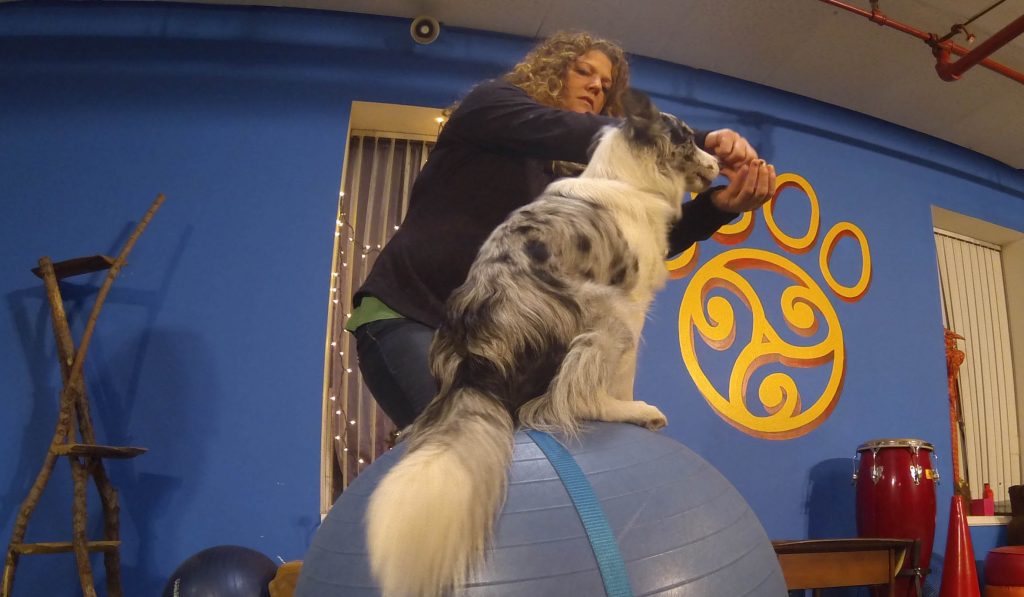
What Is a Duration Behavior?
Definition
A duration behavior is a Stay; whether it is sitting, lying down, standing on hinds, sitting pretty, or a handstand the dog and handler both know that the behavior is to be held until the release cue.
Duration behaviors have a beginning and an end. The beginning is cued and the end is cued with a Release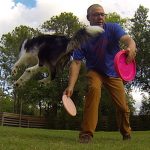 Release has many meanings in disc. Throws and throw variations can be referred to as releases. Sometimes you talk about the dog releasing something, the toy, or the environment, as in to stop... More cue. These are both actions or behaviors. The middle of the skill is no behavior at all – holding position is an absence of behavior.
Release has many meanings in disc. Throws and throw variations can be referred to as releases. Sometimes you talk about the dog releasing something, the toy, or the environment, as in to stop... More cue. These are both actions or behaviors. The middle of the skill is no behavior at all – holding position is an absence of behavior.
The ‘end’ part is critical. If there is no clear ending of the behavior then the dog doesn’t know it is a duration behavior and the duration part of the skill will be shaky. The dog will not know how long to hold the skill and will be likely to disengage from the skill on his or her own or contextually.
Want Duration? Learn to Release Your Dog.
The easiest way to get a solid duration behavior is to release your dog early and often with your release cue and reinforce that release liberally.
When the dog learns that the cued Release from the behavior is what pays then the dog will “stay” there until the release cue. This plays on the back chain concept and is a powerful method for gaining duration.
Release Early and Often and rinse & repeat…
Build Desire Before Duration, Difficulty, Distance, or Distraction
A dog who wants to do a skill is more likely to do the skill. Creating desire within the dog to do your duration behavior reinforces the likelihood that the dog will hold the skill until released and gives the handler more flexibility to generalize the skill and create a stronger understanding of what is expected.
While you can solely rely on the release from the skill to create your duration, it might not be the best way to create desire. It totally can be done this way but it’s a sneaky technique that requires complete buy in by the handler and clear and consistent handling to create the desire for the dog to make it to the finish. It also can be tough for disc dog skills.

Within disc dog skills, the dog will be juggling multiple behaviors and will be taking multiple “cookies”. A Juggle or a Shuffle in a Back Stall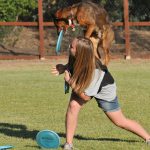 A Stall happens when your dog leaps up and stays on a part of your body. Stalls are usually named by the part of your body they happen on. If your dog leaps... More or while standing on hinds, for instance will ask the dog to hold the duration behavior through multiple “cookies”. If there is no desire to hold the behavior through the release or no experience getting multiple cookies during the duration behavior, the skill is likely to fail when a disc is delivered.
A Stall happens when your dog leaps up and stays on a part of your body. Stalls are usually named by the part of your body they happen on. If your dog leaps... More or while standing on hinds, for instance will ask the dog to hold the duration behavior through multiple “cookies”. If there is no desire to hold the behavior through the release or no experience getting multiple cookies during the duration behavior, the skill is likely to fail when a disc is delivered.
Building desire for duration with multiple cookies is a function of Math. Paying the dog at a rate of reinforcement that is guaranteed to keep them in the behavior through the end is key.
Paying the dog at a rate of reinforcement that guarantees the behavior is held rapidly adds value and reinforces holding the behavior through the Release cue while giving them practice at taking multiple cookies.
Stay is an Absence of Behavior
Doing the thing and assuming the position is beginning the the duration behavior. While the dog is in position, they are not doing anything – the Stay is an absence of behavior.

Do not mark any cookies you give during the duration behavior. To mark as you pay tells the dog they have done something, and while they are holding the duration behavior, they are not doing anything.
If the dog gets the idea that they are doing something during the duration behavior you will get lots of superstitious behavior. If you mark every time you deliver a cookie, you tell the dog they have done something. Clicker savvy dogs will try to figure out exactly what behavior they are doing that made the cookie happen.
MarkShort for “Positive Marker”, a Mark is a word or signal given at the exact moment a desired behavior is performed. It’s like a clicker. Mark can also mean the act of marking... More the beginning of the behavior and the end of the behavior and only mark during Duration if the dog makes some clear decision or takes an action that leads to maintenance of the Duration behavior.
Heel as Moving Duration Behavior
Heel is a moving Duration behavior. The dog holds position until released. If you’re not releasing your dog from Heel, you don’t have Heel as a Duration behavior and your dog is not likely to hold Heel until your Release cue.
If you want your dog to hold the Heel position, learn to release him or her early and often and pay it well. You can also add value on critical moments of the skill like on every left footfall, drawing attention to the positional relationship between the dog and the leg while keeping the rate of reinforcement at a level that is guaranteed to keep the dog into position.





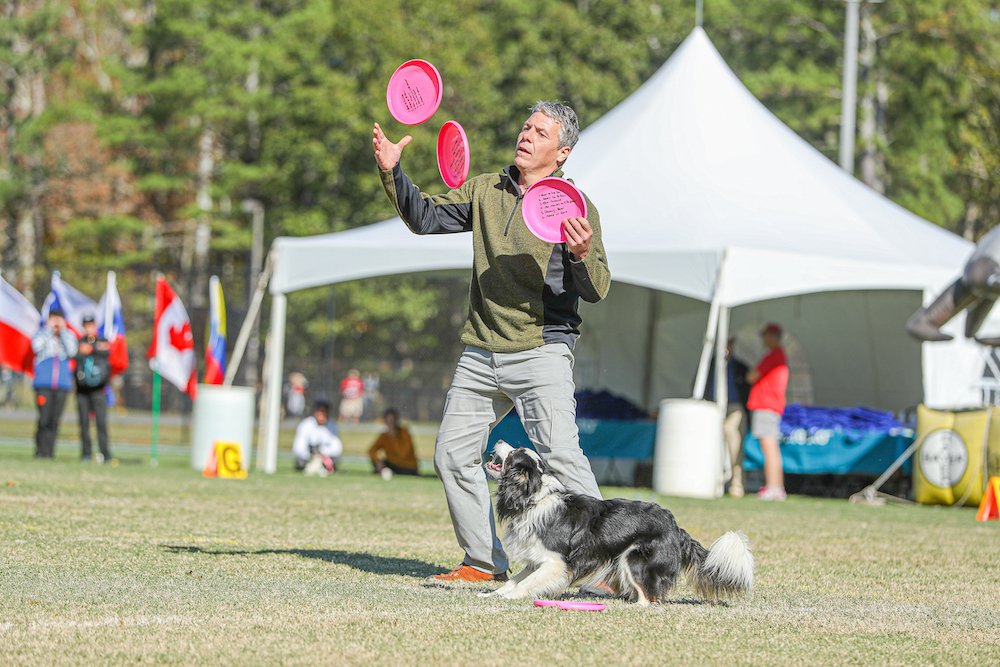
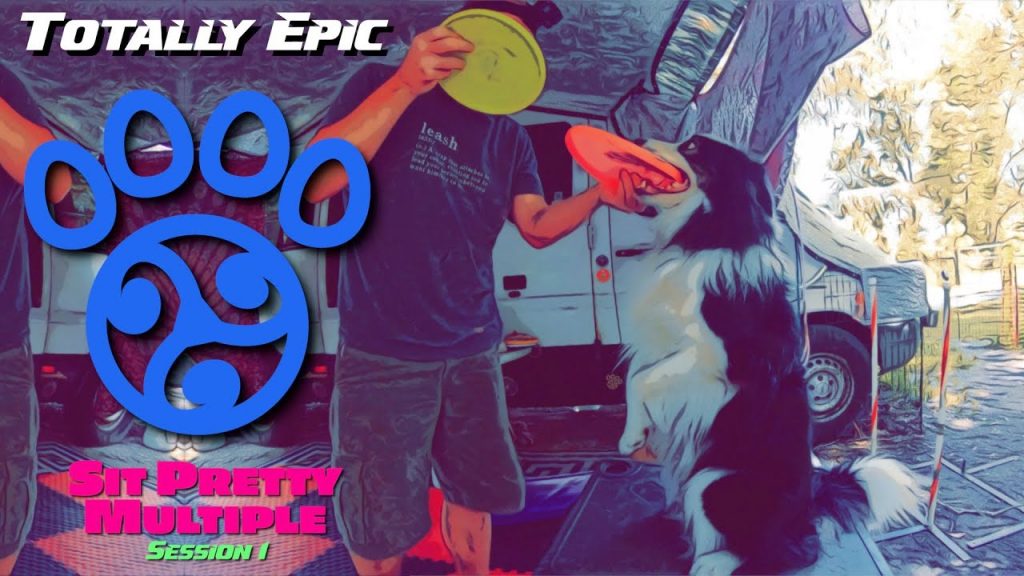
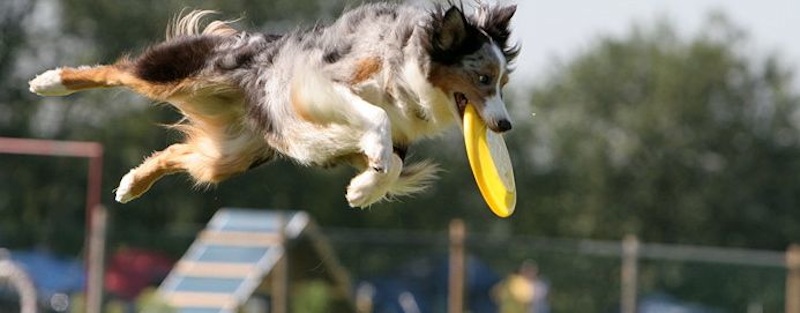
@Bruno